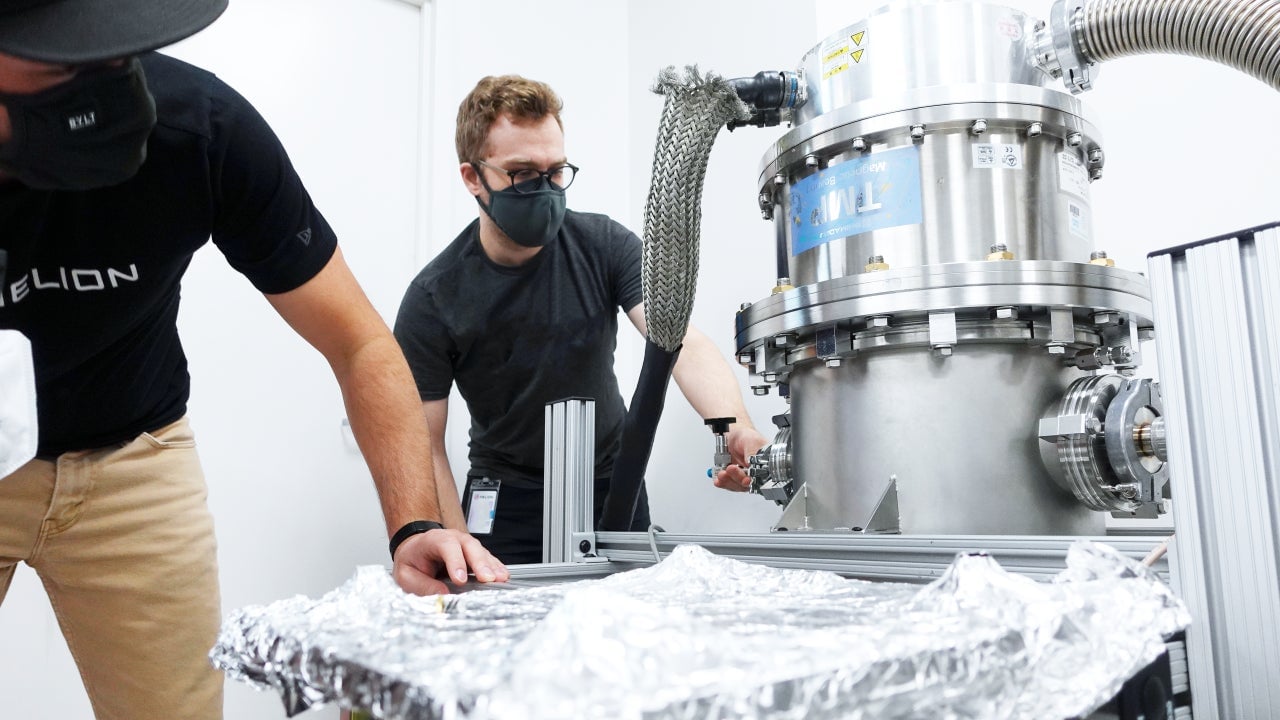Private investors are finally rivaling public financing of fusion energy
Nuclear fusion always appears just a few decades away from commercial viability. Refining the atomic reaction to generate more energy has foiled scientists for generations. Fusion, which occurs when two positively-charged nuclei merge, takes an immense amount of energy to produce in reactors, but only returns a fraction of that energy to create electricity.


Nuclear fusion always appears just a few decades away from commercial viability. Refining the atomic reaction to generate more energy has foiled scientists for generations. Fusion, which occurs when two positively-charged nuclei merge, takes an immense amount of energy to produce in reactors, but only returns a fraction of that energy to create electricity.
But if they succeed, it promises to deliver a reliable clean energy source at a time when few other options exist. Private sector investors that recognize this promise are now putting their money into fusion energy startups.
One such company, Helion Energy, announced on Nov. 5 it raised $500 million in its latest fundraising round, said to be the largest-ever single fundraising round for a private fusion firm. The funding includes an additional $1.7 billion tied to certain performance milestones. Like most fusion energy startups, Helion focuses on electricity. It says it has achieved the necessary temperature threshold (100 million degrees Celsius) for its generators to power a clean energy power plant.
Helion now expects to achieve the industry’s holy grail of net positive electricity by 2024. Helion plans to use “pulsed non-ignition fusion” to directly recover electricity from their fusion generator. Other private companies have set similar targets: TAE Technologies in California says it will be commercially viable by 2030, while MIT’s Commonwealth Fusion Systems expects its reactor to achieve this goal by 2025. The UK, which says it wants to become the first country to commercialize fusion energy, has set a more modest target. The government has invested in a £200 million ($248-million) reactor which it hopes will be viable by 2040.
If any manage to hit their target, it will finally usher fusion out of the laboratory and into commercial energy production, supplying a carbon-free source of baseload electricity at a time when few other options exist.
How fusion fits into broader climate goals
The promise of fusion energy is huge. The same reaction that powers the Sun can be harnessed on Earth to generate heat and electricity without emissions like carbon, nitrogen, or sulfur. The fuel (hydrogen isotopes) is cheap, plentiful, and energy dense, so reactors take up little space.
The wave of concern over climate change is now giving nuclear power a chance at a comeback. At this month’s COP26 climate conference in Glasgow, Scotland, US company NuScale announced on Nov. 2 it would build modular fission reactors—small, safer versions of conventional nuclear plants—in Romania after the US struck a deal with the eastern European country. The US also announced plans to build reactors in Kenya, Brazil, and Indonesia.
Critics argue nuclear energy technologies will not be ready soon enough when other solutions are ready now. Tom Burke, co-founder of climate think tank E3G, told TIME “the idea that you’re going to scale up a technology you don’t even have yet, and it’s going to be commercially viable [in 25 years], just seems to me like la la land.”
Others in the international community see fusion as a distraction from carbon-free energy sources like wind or solar. “From an ecological perspective, it’s not future proven,” said Rasmus Andresen, a politician with Germany’s Green party who proposed an amendment to the EU’s budget in September redirecting money from fusion to already-existing renewable power. “From an economic perspective, it’s inefficient.”
Fusion funding is heating up
For decades, governments and science institutions led the charge on fusion energy research. No more than two private fusion companies existed throughout the 1990s, according to an Oct. 25 report by the UK Atomic Energy Authority. Governments are still putting money into fusion research and investing in partnerships like ITER, an international nuclear reactor in southern France supported by 35 nations, including the US. But investments in fusion power startups are starting to rival public funding: 23 fusion companies worldwide had declared $1.9 billion in funding to date, the vast majority of it private.
Scholars such as Arthur Turrell, a physics professor at Imperial College London, argue the private sector may now be ready to turn decades of publicly-funded fusion research into a viable industry. “Investors are betting that private companies can succeed where governments have failed,” Turrell wrote in his book, The Star Builders.
The future of fusion, however, may be too expensive and slow for either alone. ITER, for example, is not expected to be ready for commercial implementation until 2055 or 2060 (well beyond the Paris Agreement deadline for eliminating net global greenhouse gas emissions). Andrew Holland, executive director of the Fusion Industry Association, argued in April that public-private partnerships are the best way to support innovative companies while hitting safety and performance targets. In February, the US National Academy of Sciences suggested the public and private sectors should work together recommending a joint effort between the private sector and the Department of Energy to develop an operational fusion pilot plant by 2040.
Correction: Helion plans to use “pulsed non-ignition fusion” to generate electricity, rather than a self-sustaining fusion reaction as previously stated.